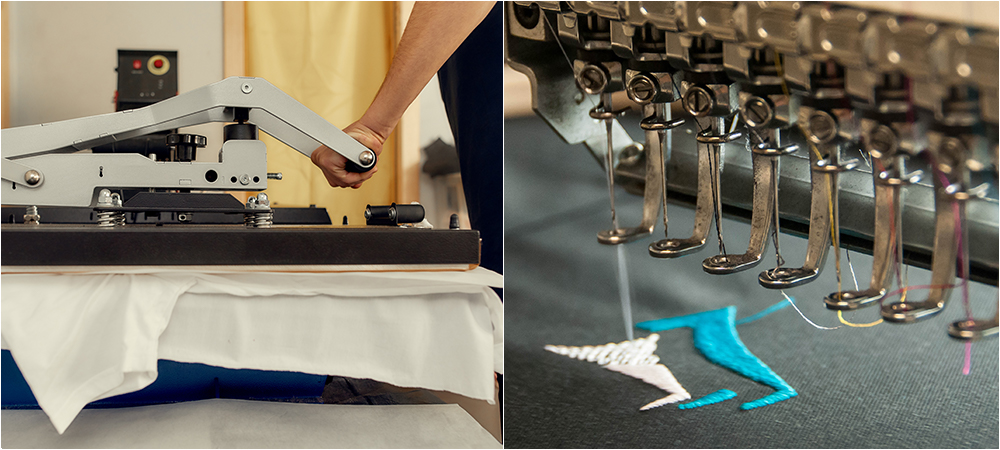If there’s a universal truth in decorating goods, it is this: issues will arise.
Whether it’s so challenging you feel like only Sasquatch has the answer, or it’s the end of the day and even the simplest answer seems out of reach, it can be frustrating. Over the last eleven years we’ve been able to field many decoration concerns, and there are a few which routinely float to the top. Some common concerns arise, for example, due to the growing prevalence of polyester performance fabrics. These include:
- Heat during screen printing or heat transfer
- A combination of needle choice and digitized artwork in embroidery
Heat-Related Issues and Accessories
Screenprinting can present several issues when a polyester garment is heated beyond supplier recommendations, from ghosting to burning the fabric and even shrinking on the extreme end. Heat can be applied in several ways, including flash units, dryers and convection through hot stacking or boxing warm/hot pieces.
There are a few accessories your shop can utilize to test and maintain equipment for consistent results. The least prohibitive are test strip kits and infrared laser non-contact thermometers. Depending on your dryer and level of accuracy you need, you may want to spend the extra dollar and utilize a donut probe.
Heat press has its own challenges when dialing in excess heat. Pressure and time play a role, but a good starting place is usually in the unit’s temperature regulation itself, utilizing a quick test strip kit or infrared thermometer. For best results, you may want to invest in a contact-based thermometer/probe. Keep in mind that the center of the platen will have the highest concentration of heat.
Needles and Digitized Artwork
An embroidery needle size and shape can play a significant role in the success or failure of the final embroidered product. For lightweight and high-stretch polyester pieces, you may need to order in a 65/9 sharp or light ball point. When tackling that Carhartt heavyweight and durable fabric, you may find an 80/12 sharp will help you get the job done! These solutions may feel unusual as most items require a more standard needle but in these cases they have been shown to create a winning result.
Similarly, if you’re having challenges with puckering or cutting the logo out during a sew, you may need to review the stitch density and underlay. Especially when accounting for push/pull on columns or arcs, a short stitch could become a new best friend to attain the preferred result.
As apparel is designed for the utility of the end user, the decoration is often secondary and the most challenging piece to account for. While the tips and tricks for newer fabrics described above can be helpful, a good sample speaks volumes. As you dialing in that sample yourself, I highly recommend a new tool built to assist in your daily efforts with digital customers and your production teams alike.
In our next article, we will dive into the newly established “matrix” of information that is available today on each products Decoration Spec Sheet when signed into SanMar.com.
